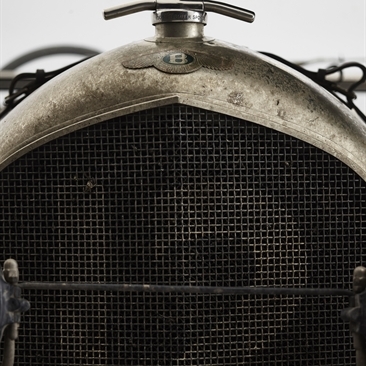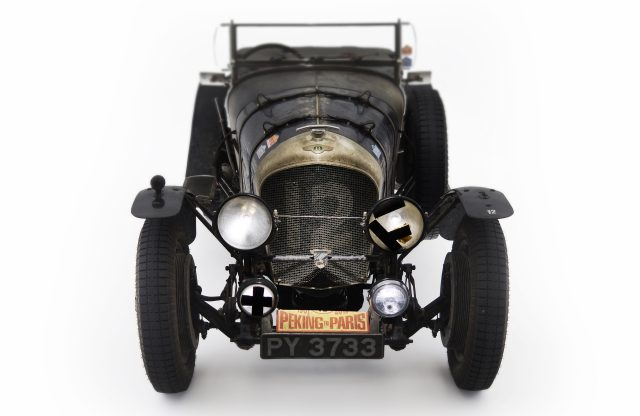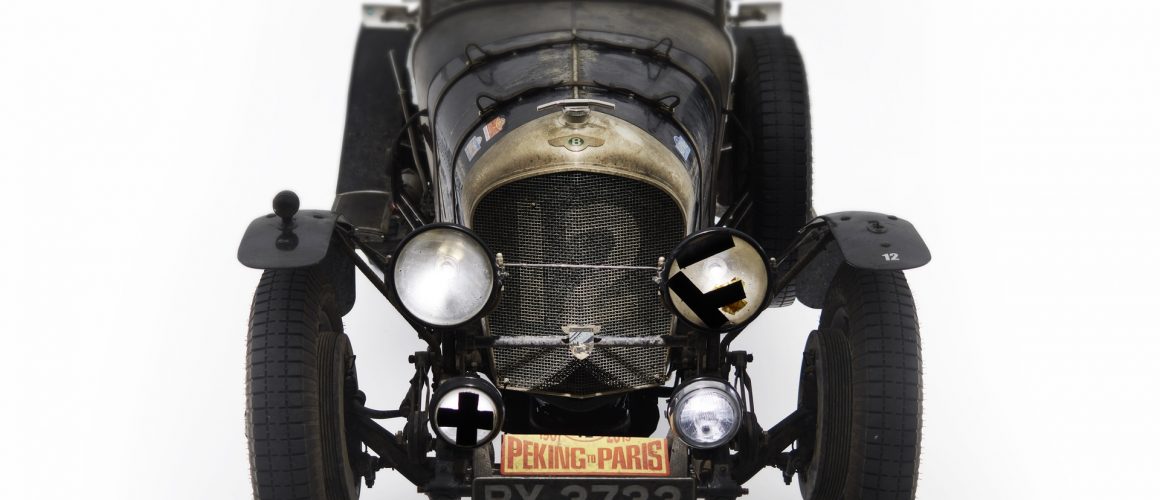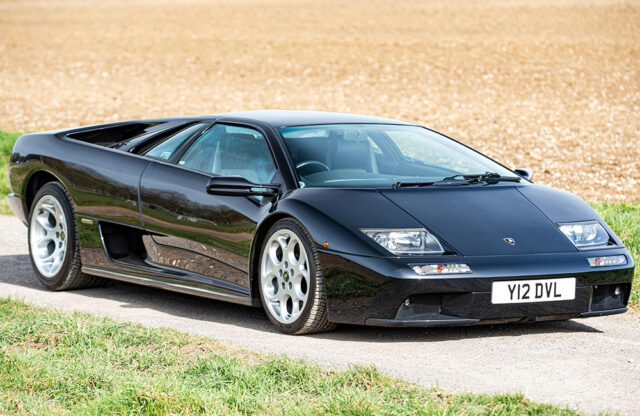Words: David Lillywhite | Photography: Matthew Howell, Gerard Brown
What does it take to win the legendary Peking to Paris Motor Challenge? A Bentley, say Graham and Marina Goodwin – along with healthy portions of determination, preparation and good, old-fashioned luck.
The Facebook page says it all: “Dust in my Face is set up by Graham and Marina Goodwin, two middle-aged empty-nesters who have decided to explore the world in a pre-war vintage Bentley.” This, you’ll probably have guessed, is that vintage Bentley. Its name is Pyman, and it’s pictured here still wearing its Peking to Paris war wounds and dust.
Why a Bentley? You might assume that it’s hardly the best choice, but Graham and Marina are converts. “I was into off-road motorbiking,” says Graham, “so when the kids flew the nest and we sold our business, I thought we should take the opportunity to see the world on a motorbike.
“But I really didn’t fancy off-roading on the back of a bike,” says Marina. “I’d already broken my collar bone skiing.”
Graham again: “Then someone said, ‘Why not try rallying?’. We talked about it, and thought maybe we should, maybe in a ’60s or early ’70s Porsche. But we kept seeing the pre-war cars and thought it would be really cool to try something older. Our worry was how strong a pre-war car would be.
“Then we saw the Bentleys. They’re tough, easy to work on and reliable, but also over time they’ve continued to go up in value. As a Yorkshireman, that appeals to me. Then we found that they’re incredibly exciting to drive, they’re really fast, they’re mechanically simple, so you can learn how to maintain them – we just got more and into the idea.”
So the choice had gone from a modern motorcycle to a century-old Bentley. Next step, to find said Bentley and to prepare it for rallying. Graham and Marina went to vintage Bentley specialist William Medcalf, and came away with a rare 1925 Supersports – WO Bentley’s sportier ‘Green Label’ take on the 3 Litre model, introduced when the 3 Litre and the company had been around for just six years.
Only 18 Supersports were built between 1925 and ’27, all but one of them on a special 9ft short-wheelbase chassis (the other on a standard 9ft 9½in chassis). These were fast cars, capable of 100mph, and more agile thanks to the shorter wheelbase. They tended to be fitted with relatively lightweight bodies to effectively make a Bentley hot rod. Pyman was the fourth of nine built with a wider bulkhead, and hence an oval radiator. It’s thought that four or five survive.
The appeal of the Supersports for Graham and Marina was clear. Here was a vintage car that was rare but strong and fast, with better handling (compared with a standard-wheelbase Bentley) at the expense of a bit of ride comfort, and the icing on the cake was that this particular Supersports had a strong Yorkshire heritage. Its first owner, a Mr Pyman (ah-ha!) was in the shipping industry, and based in Whitby. “We bought it to take home to Yorkshire,” says Marina.
Still, the plan from the start was that Pyman had to be built to withstand tougher territory even than Yorkshire, so William Medcalf Vintage Bentley was commissioned to rally prepare it.
“We went to see Medcalf, and then we were hooked,” says Graham. “Ultimately that culminated in us doing the latest Peking to Paris. We did some little rallies as a test, then our first big one was the Rally of the Incas, and we then got totally hooked. It’s a combination of things: the people you meet, the challenge, the reception you get when you drive through in a Bentley.
“If you want to do a big rally, if you want to be really cool, either you do it in something really old like an Itala with wooden wheels, or you do it in a Bentley. Obviously we’re biased! But with an Itala it’s about surviving until the end, while in a Bentley the difference is that you can still win an event, you can beat all the pre-wars and you can beat the classics. And it’s seriously cool, spectators like you, and everyone on the rally likes you because they know you’re putting in a pretty hard shift – you get dirt in every orifice.”
“The only day I looked clean on the Peking to Paris was the day I turned up,” agrees Marina.
The pair are delighted that they went to Medcalf, pointing out that you need the absolute best preparation and an expert at the other end of the phone at all times, because a long-distance rally is such a big commitment of both time and money – and if you don’t get to the finish, all that is wasted.
“The cars that have won the Peking to Paris a lot in the past have been Chevrolet ‘Fangio’ coupes, and they’re very good rally cars,” says Graham. “You can fit a rollcage in them, so you’re safer, you can fit harnesses in them, again so you’re safer, and underneath you can fit some quite nice shock absorbers, which will help on the rough stuff. The downside of a car, perhaps, that has a rollcage and seatbelts is that it gives you the confidence to go maybe a bit quicker than you should.
“On a Bentley you can’t really modify it all, so our car was almost standard. We got a little more power out of the engine than was standard, but it was standard suspension, standard gearbox – no synchromesh, double-declutching – and no seatbelts or rollcage. I had the steering wheel to hold onto, but Marina – well, usually by the time I’d shouted ‘bump!’, Marina was already in the air.”
“I’ve got a little handle I can hold onto but it wasn’t much use. I was like a loaf of bread sitting in the seat,” laughs Marina.
“We had times when we were racing along a single track in Mongolia behind another car, and you’re in their dust cloud because you’ve got to get close to them to overtake,” says Graham. “You’ve got to wait until the rut at the edge of the track disappears so you can go off track and then get past them and pull back in. Then, when you’re in that dust cloud, suddenly they do a manoeuvre around a 2ft pothole and you hit it because you don’t see it. We had that happen around four times and it was brutal.
“We also had a time on some soft stuff and we hit a bump. I don’t know why but it launched us in the air. I thought I’d cracked my neck, and Marina…”
“I went up in the air!” says Marina. “I was horizontal, and I hit my back hard on the back of the seat. Two days later I couldn’t open car doors and things. I thought I’d fractured my ribs. I had a lot of painkillers, but we were still going for it, and we were on rough roads. I just pretended I was having a baby, panting to get through the pain. You have to keep going.”
“You need a tough navigator!” confirms Graham, perhaps unnecessarily, but it’s clear these two took the event seriously, working on the car every night, checking for damaged or loose components, Marina studying the route books.
“There were days when we did 650km and the only stops were when you had your timecard chipped, and then you were off again. There was no going for a pee, no food, nothing.
“There were also times when Marina was urging me to go faster (Marina: “We were behind, I said go faster!”). I knew the car would be totally destroyed if I did. To be competitive you’ve got to know the 100 percent point on your car. At what point will your car be destroyed? And then you need to drive five percent back from that. You need to take your car to the edge of destruction but not over the edge.”
“Anyone competing needs to know their car,” confirms Marina. “A lot of people don’t. I’m always taken aback.”
Both agree that the highlight of Peking to Paris was the 800-mile section through Mongolia, across the Gobi desert, referring to it as “one of the last wildernesses” and “like being on the moon”. And although both Graham and Marina admit to being highly competitive, with top-three finishes in a few rallies prior to Peking to Paris, even they were surprised to find themselves leading the Vintage class (there are just two classes, the other for pre-1976 classics) by two minutes.
“We never expected to be in the lead before we got to the end of Mongolia. One night we were stood having a glass of wine by our tent, and Jamie Turner, who’s one of the top mechanics (and competitors) on the event says, ‘You’ve done amazingly well, but you know that nobody has ever won Peking to Paris who’s led out of Mongolia?’ We thought, ‘oh brilliant…’, because we hadn’t been in the lead but then the car in front of us fell apart and that got us into the lead.”
Could they hold onto the lead, though? They were trying to conserve the car over the rough terrain, but their lead kept dropping, until it was down to 40 seconds – and Graham in particular was feeling the stress.
Then, in Russia, came trouble. Pyman had been fitted with neoprene covers over the air filters to protect them from the Mongolian dust, but Graham took the covers off once they reached Russia. After a full day of rain, they hit a waterlogged special stage, and mud sprayed up both sides of the engine, all over the starter motor and the carburettors, and into the engine. The throttle stuck at 3500rpm – almost maximum revs for a Bentley 3 Litre.
“We ended up driving with the throttle locked on,” says Graham. “I had to brake against the engine dragging us along because we were skidding around and in danger of doing a full doughnut on the track, and this was a timed stage.
“When we got to the end I turned the engine off to see what was wrong with it, couldn’t see what the problem was, went to re-start, and the starter jammed. We got a bump-start, and it then locked on at 3500 revs again. This is where we were lucky, because the organisers had brought the main time control a little bit earlier – you need luck sometimes!
“But we still had to drive the car with a locked-on throttle for 90km and just bang it into gear, and every corner you just had to ride the clutch. We got towed through the border at Kazakhstan; we couldn’t have driven through at 3500 revs, they’d have arrested us. We thought we were out of the rally but we made it to the end.” It took until 1.30am to find and fix the problem, and then it was up at 5am again for the next leg.
Incredibly, Graham and Marina had held onto the lead, and when they got to Finland the special tests were on circuits and rallycross tracks, which suited them better than rough terrain; by the end of the Finnish leg they were six minutes ahead. Still, anything could happen…
“We had a rally in Africa that we led for 24 days and then lost it at the end,” recalls Graham.
“That was my fault; that’s known as Papergate,” grins Marina. “He says he’s forgiven me, but he quite clearly hasn’t.”
Still, they were getting closer and closer to the Paris finish, until at last there was just one stage left to do. But as a final twist, the maximum time penalty had been raised from the usual four minutes or so to eight minutes. And Graham and Marina’s lead was just six minutes – so one wrong slot and they could have lost first place.
“Everybody was setting off and driving like the clappers, and all the spectators were amazed,” says Graham. “And then we drove in first gear and just chugged round it.”
“The look of disappointment on people’s faces!” laughs Marina. But they’d done it, they’d completed 13,500km with just one unintended 30km diversion, leading most of the way.
“To win the Peking to Paris is a big deal,” says Graham.
“It’s only every three years, a Bentley has never won it before, it was Bentley’s centenary year, we’re a husband and wife team, and I don’t think a British team has won it for a while.
“Ultimately, though, while it’s a competition and we went for it, the most important things are the people you meet and the places you go through. Russia was a revelation! The people were lovely, they would help us work on the cars and they wouldn’t take any money. That’s a lovely dynamic.
“It’s a drug. If you start endurance rallying you’ll get hooked. Some people do Peking to Paris as a bucket-list trip. If you want to do Peking to Paris and all you want to do is finish, I would say it’s not that difficult. All you’re doing is driving a long way,” says Graham.
And it’s still “a fabulous experience”, confirms Marina.
Now Graham and Marina are building up to their next big challenge, the three-part Round the World organised by Rally the Globe, which they’ve helped to set up. They’re hooked.
If you liked this, then why not subscribe to Magneto magazine today?
For the 2022 Peking to Paris, see www.endurorally.com. For information on Round the World, visit www.rallytheglobe.com.





















